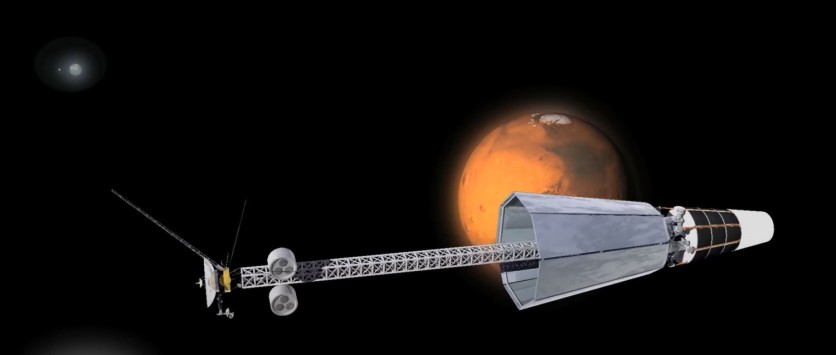Lockheed Martin has secured a $33.7 million grant from the Air Force Research Laboratory (AFRL) to advance its Joint Emergent Technology Supplying On-Orbit Nuclear (JETSON) High Power program, focusing on the maturation of high-power nuclear electric power and propulsion technologies for spacecraft design.
The initiative, currently in the preliminary design review stage, aims to address the growing demand for enhanced spacecraft mobility, situational awareness, and power generation.

Lockheed Martin's JETSON
Teaming up with Space Nuclear Power Corp (SpaceNukes) and BWX Technologies, Inc. (BWXT), both recognized for their expertise in nuclear power and reactor design, Lockheed Martin's JETSON project marks a significant step forward in leveraging nuclear electric propulsion for ambitious space exploration missions, including those bound for the Moon, Mars, and beyond.
Barry Miles, the program manager and principal investigator for JETSON at Lockheed Martin, emphasized the pivotal role of nuclear fission development in space applications, envisioning transformative technologies that could redefine space exploration.
"Nuclear fission development for space applications is key to introducing technologies that could dramatically change how we move and explore in the vastness of space," Miles said in a statement.
He emphasized Lockheed Martin's commitment to collaboration with government agencies and industry partners to advance high-power electrical subsystems, electric propulsion, nuclear thermal propulsion, and fission surface power systems.
The core of the JETSON program centers on a fission reactor responsible for generating heat, which is then transferred to Stirling engines to generate electrical power within the range of 6 kWe to 20 kWe.
This power capacity surpasses conventional solar arrays by a factor of four, providing a significant edge for deep space exploration missions, especially in situations where continuous sunlight cannot be assured, according to Lockheed Martin.
The program's conceptual framework is influenced by the 2018 demonstration of the Kilopower Reactor Using Stirling Technology (KRUSTY), a collaborative effort led by NASA and the Department of Energy's National Nuclear Security Administration.
Andy Phelps, CEO of SpaceNukes, highlighted the significance of JETSON, underscoring its potential to enhance maneuverability and power capabilities, shaping future space force operations.
He emphasized that the United States has not deployed a reactor in space since 1965, making JETSON a groundbreaking leap in nuclear technology for both terrestrial and on-orbit applications.
Alternative to Solar Power
The technology's capability to deliver higher electrical output than conventional solar-powered spacecraft aligns with the growing demand for alternative power-generation methods.
In scenarios where solar panels may be impractical, such as deep space missions or shadowed regions, nuclear electric-powered subsystems offer a valuable addition to a company's power-generation capabilities.
Safety remains a priority for JETSON, with careful consideration given to the handling of uranium before the fission process begins. The reactor remains inert and inactive during launch, ensuring it only initiates the fission process when the spacecraft is safely in a non-decaying orbit far from Earth.
The project's development work will span various facilities across the country, including Lockheed Martin's facility near Denver, AFRL's facility in Albuquerque, New Mexico, SpaceNukes' facility at Los Alamos, New Mexico, and BWXT in Lynchburg, Virginia, with additional support from national labs, facilities, and suppliers in New Mexico.
Related Article : Lockheed Martin Successfully Tests Next-Gen Missile, Sets a Range Record

ⓒ 2025 TECHTIMES.com All rights reserved. Do not reproduce without permission.




